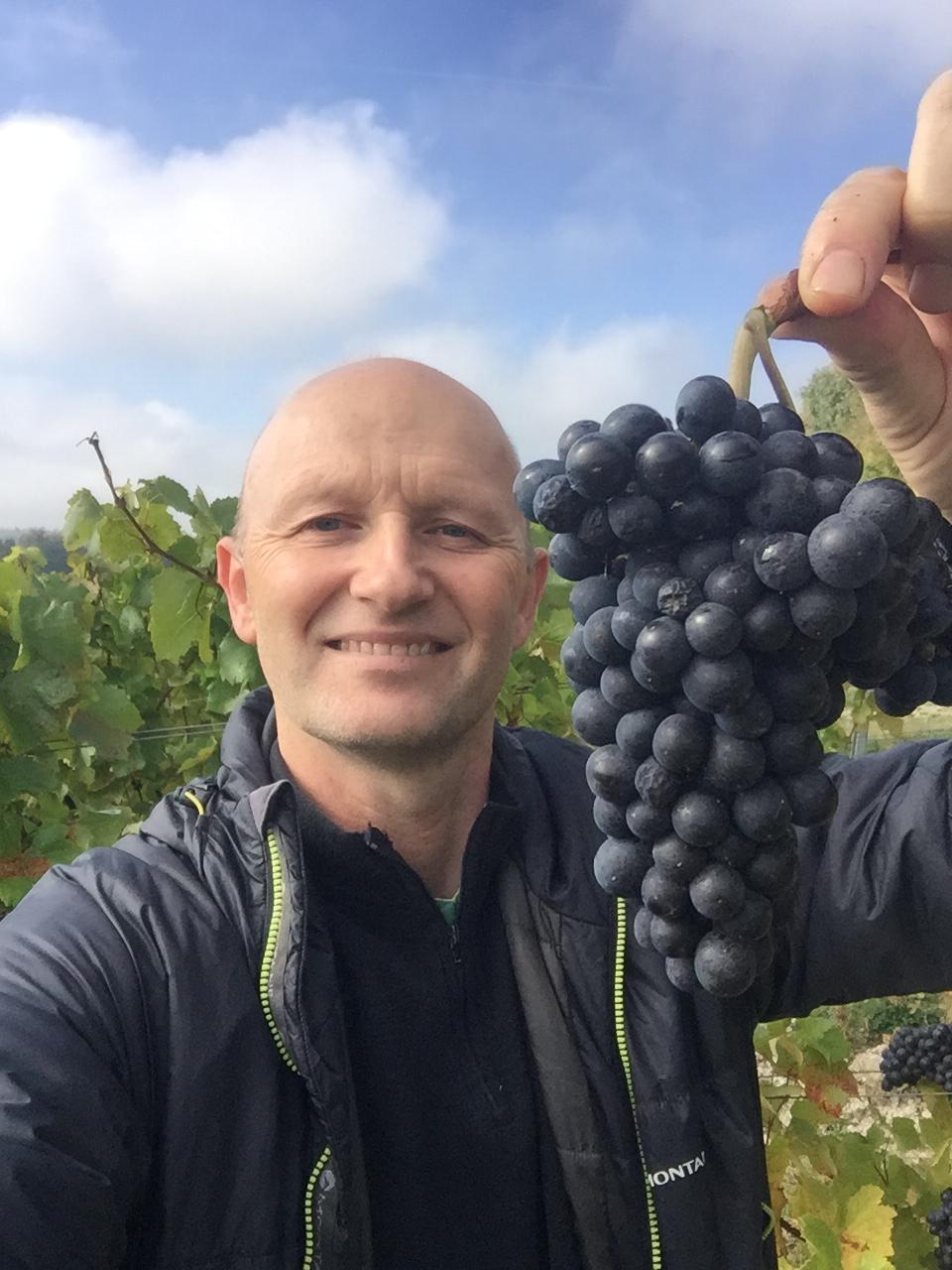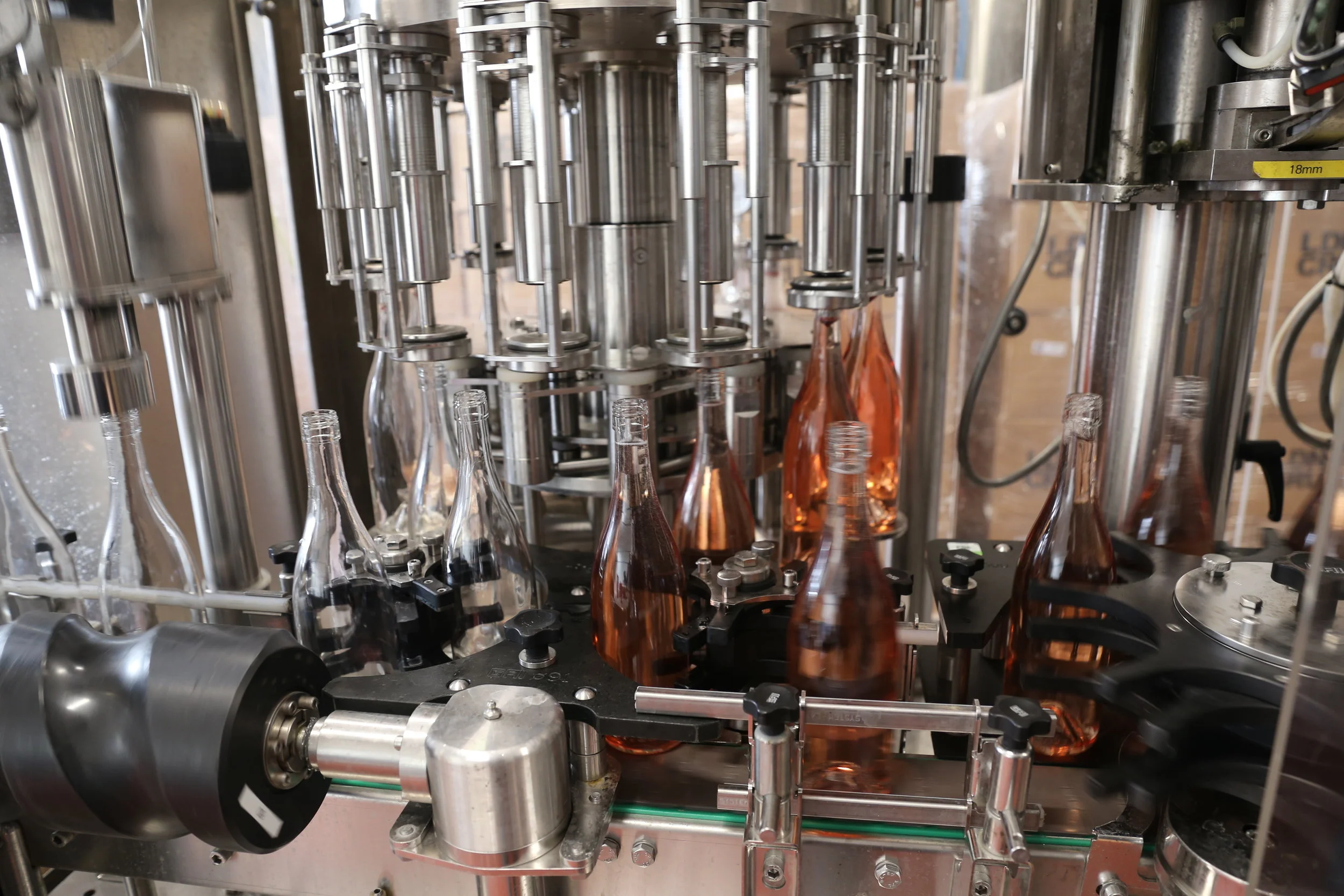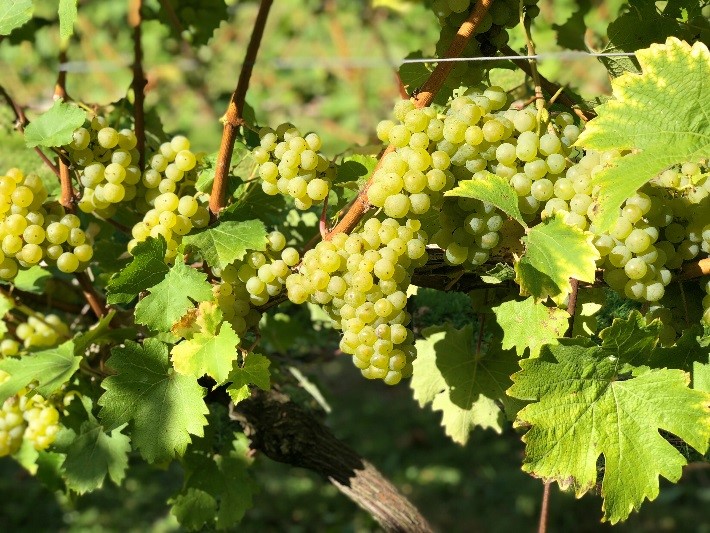At Roberson Wine we love a great rosé and during the spectacular 2018 English vintage our London Cru team managed to get our hands on the perfect Pinot Noir grapes. Due to the exceptionally warm summer these grapes were perfectly ripe, carefully hand harvested and transported from Surrey in small crates to our cellar in Fulham.
Once in our state-of-the-art cellar these grapes were destemmed, gently crushed and then allowed to macerate in our pneumatic press for 4 hours. This period, where the skins and the juice are in contact, allows for the anthocyanins (colours) in the skins to be extracted.
When we had the perfect rosé colour the free run juice was transferred to our temperature controlled fermentation tanks and inoculated with specific rosé wine yeast. At London Cru we take our rosé very seriously and fermented the wine as 2 different components, each with an important role in the finished wine. 90% was fermented and aged in stainless steel tanks which preserves the delicate fruitiness of the Pinot Noir aromas. 10% of the wine was fermented and aged in old oak barrels adding a richer, lightly oaked character which builds the body and complexity of the final wine in the blend.
The wine completed malolactic fermentation which adds to the softness and creaminess of the final wine. Additionally, Rosaville Rd was aged on lees for 5 months after fermentation which continued to build the mouthfeel and texture of the wine.
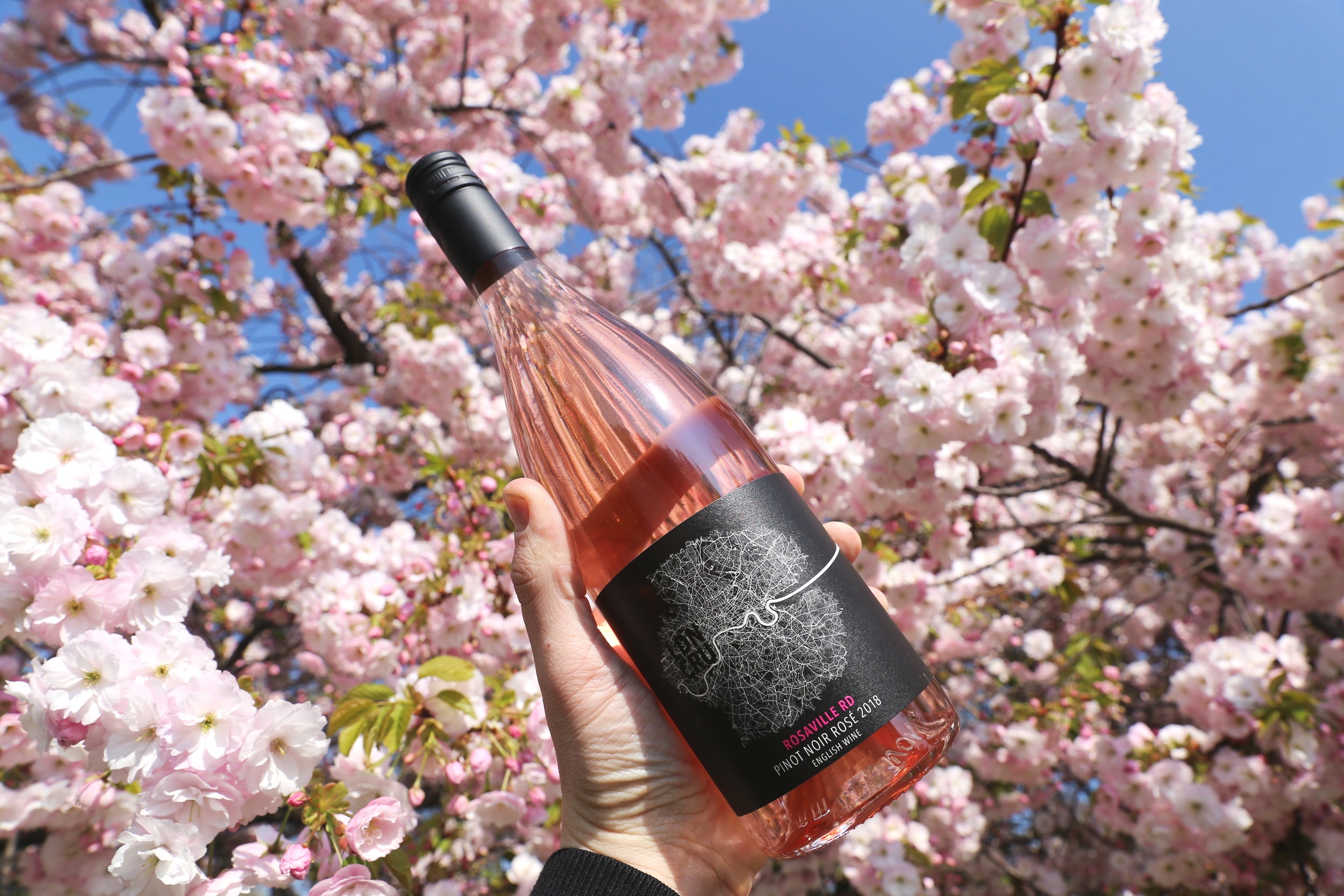

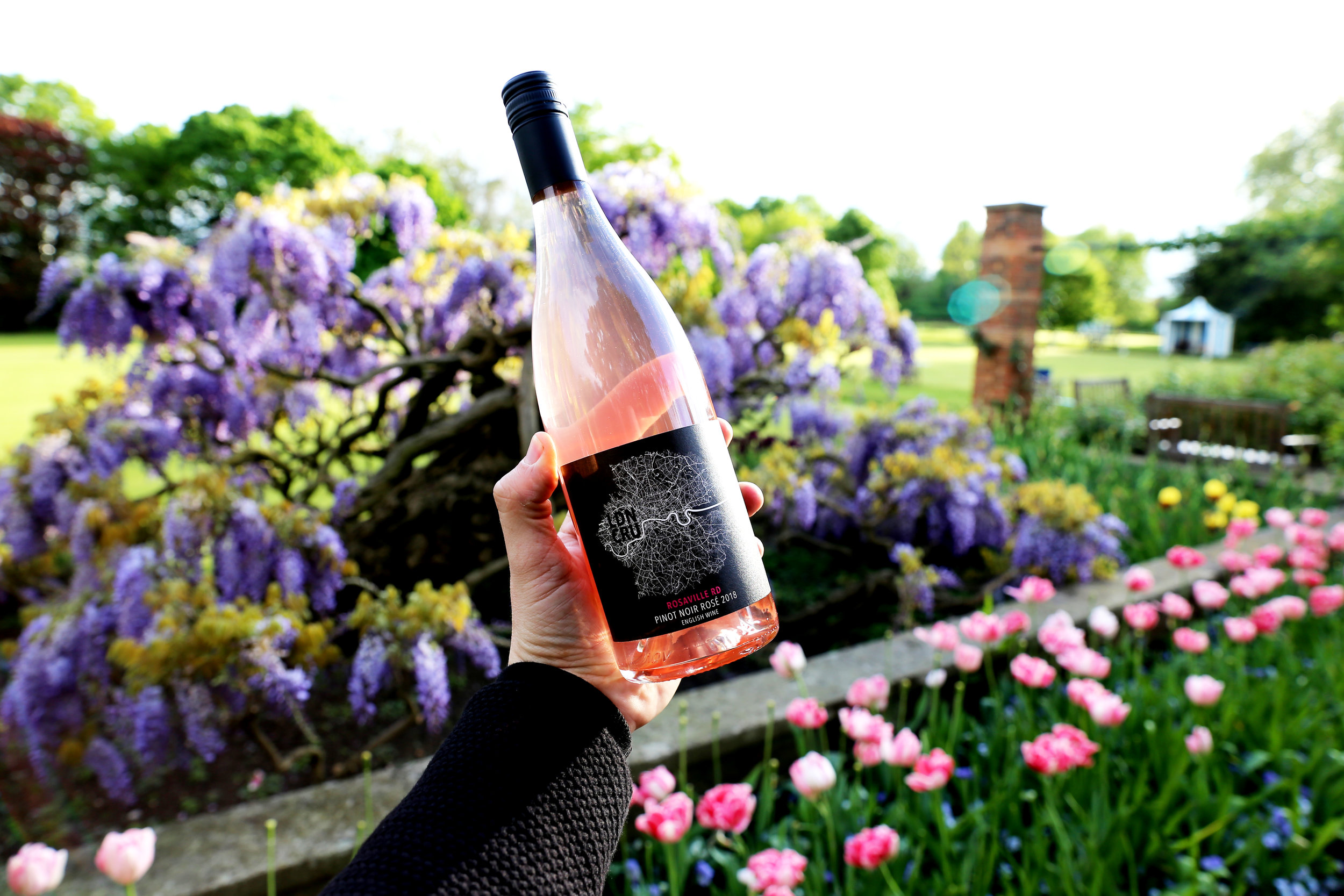

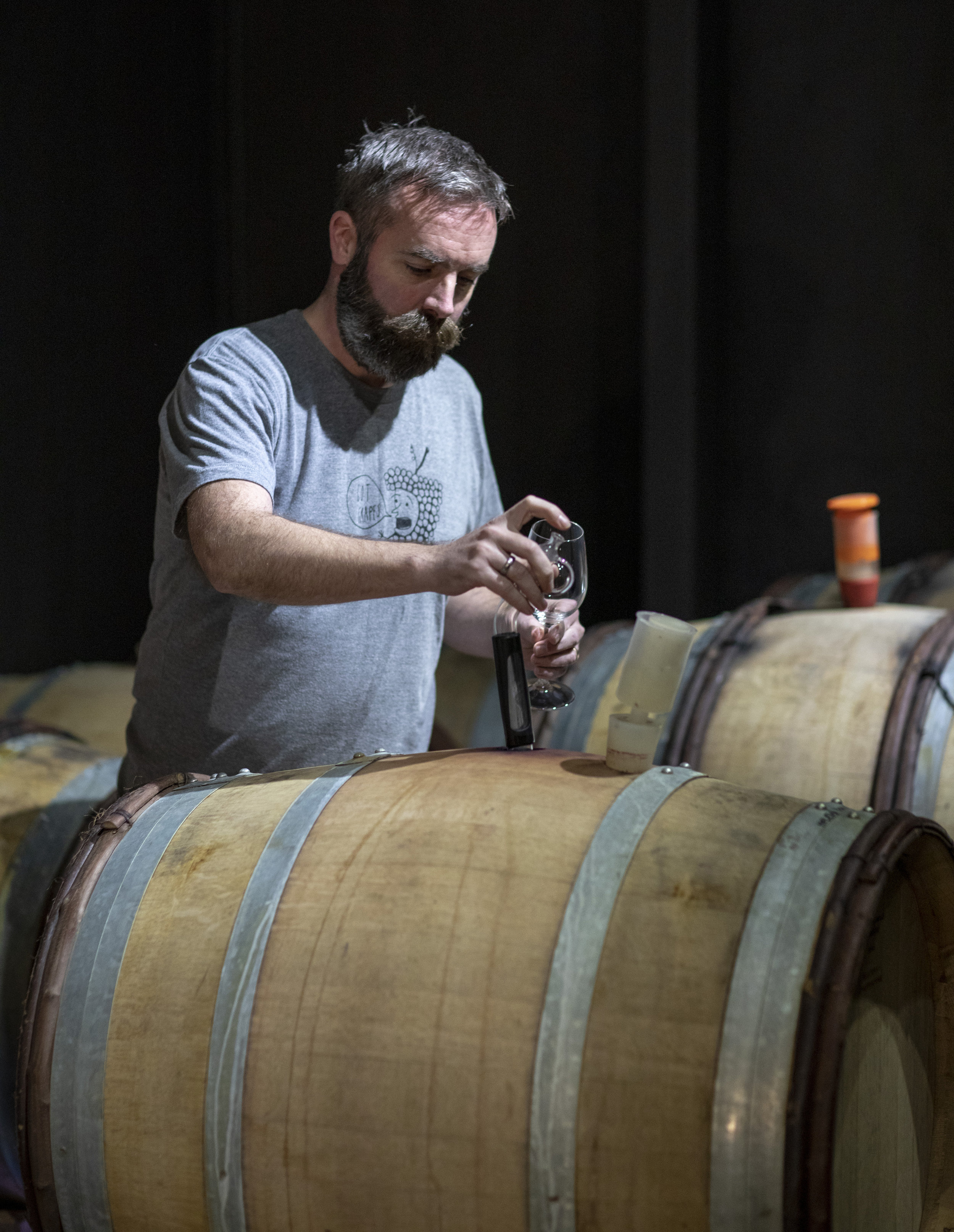
Rosaville Rd is a pale, delicate rosé, with aromas of pink grapefruit and fresh strawberries. With a smooth crisp palate of red fruits and great body from lees ageing this is an expressive English Pinot Noir from a great vintage, well balanced and a fabulous on a warm spring day. This wine is great by itself in the sunshine and also an excellent partner with light dishes such as a goat’s cheese and asparagus tart.
Check out how this wine was bottled below




